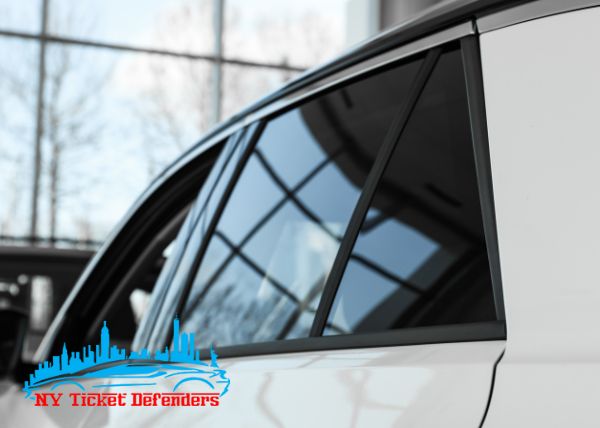Cost Effective Car Window Tinting for Every Lorry Type
Cost Effective Car Window Tinting for Every Lorry Type
Blog Article
Home Window Tinting Laws and Standards: What You Required to Know Prior To Tinting Your Auto
Before continuing with window tinting for your car, it is crucial to familiarize on your own with the varied regulations and guidelines that regulate this method throughout different states. These regulations determine the allowable levels of tint darkness, typically determined by noticeable light transmission (VLT) portions, and include certain terms for front windshields targeted at making certain roadway safety and security. Additionally, specific territories may provide medical exceptions for people with certifying conditions. Recognizing these intricacies can conserve you from prospective lawful implications, but what are the details policies in your state?
Summary of Home Window Tinting Regulations
Home window tinting laws are frequently based on variation across various territories, showing neighborhood guidelines and security factors to consider. These laws determine the permitted degrees of color darkness and reflectiveness on automobile home windows, ensuring that chauffeurs preserve adequate presence while additionally safeguarding against unsafe UV rays and heat.
Many guidelines identify window tinting based upon the Visible Light Transmission (VLT) percentage, which shows the quantity of light that can pass with the home window. Generally, reduced VLT portions signify darker tints. Regulations frequently set apart in between the front, side, and back home windows, with stricter limitations applied to the front windscreen to improve security for both the motorist and other roadway users.
Additionally, some jurisdictions impose restrictions on the reflectivity of the tint, protecting against too much glare that could hinder visibility. Exemptions to these laws may exist for people with particular medical problems requiring additional sunlight defense. Conformity with window tinting policies is vital, as violations can lead to fines, obligatory removal of the color, and possible rises in insurance coverage premiums. It is necessary for automobile owners to familiarize themselves with local laws before continuing with home window tinting setups.
State-by-State Color Rules
Comprehending the particular home window tinting guidelines in each state is vital for lorry owners seeking to adhere to the law. Each state in the U.S. has established its very own collection of policies governing home window tinting, which can vary dramatically. These guidelines typically determine the permitted levels of tint darkness, the kinds of home windows that can be tinted, and any kind of clinical exemptions that might apply.
For example, states like The golden state have stringent restrictions on tint darkness for front windows, while others, such as New Mexico, might allow darker tints. Additionally, certain states mandate particular presence percentages for numerous windows, including the windscreen, front side home windows, and back windows. It is important for vehicle proprietors to acquaint themselves with their state's laws to prevent prospective penalties or fines.
Moreover, some states might require an accreditation sticker label to be put on colored home windows, suggesting conformity with state legislations. Failing to abide by these guidelines not only takes the chance of legal effects however can also influence safety and security and presence while driving. As a result, automobile owners should carry out thorough study or consult regional authorities to make sure full understanding and compliance with state-by-state tint laws.
Allowed Tint Kinds and levels
Numerous car proprietors may be stunned to find out that permitted tint levels and kinds vary widely throughout different states. Each state has actually developed its very own policies regarding the permitted darkness and reflectivity of home window color, usually measured by Visible Light Transmission (VLT) percents. VLT describes the quantity of light that can go through the tinted windows; thus, a lower percent shows a darker color.

In addition, the kinds of color materials allowed can differ, with some states restricting mirror-like or metallic finishes. It is crucial for automobile proprietors to acquaint themselves with their state's particular legislations to ensure compliance. Non-compliance can result in fines, necessary elimination of the tint, or various other legal consequences, making it crucial to understand these guidelines before continuing with setup.
Medical Exceptions for Tinting
While not all states supply allocations for medical exemptions regarding home window tinting, those that do acknowledge the need for specific people to improve visibility and convenience as a result of medical problems. Different clinical problems, such as lupus, skin cancer cells, and particular eye disorders, can render people particularly delicate to sunlight. Consequently, these individuals may require darker colors to protect themselves from hazardous UV rays and glare.

It is necessary to keep in mind that despite a clinical exception, there might still be limitations on the degree of tint allowed. Conformity with state laws makes certain that individuals are both safeguarded and within lawful limits. Those taking into consideration clinical exemptions must call their regional Division of Electric motor Automobiles or equivalent authority to recognize the procedures and needs necessary to look for an exception effectively.
Fines for Non-Compliance
Failing to adhere to home window tinting regulations can result in significant penalties, which differ by state. Police are empowered to release citations for automobiles that do not follow the specified tinting regulations. These fines usually consist pop over to these guys of fines, which can range from small total up to numerous hundred dollars, depending upon the extent of the offense and the state in concern.
In some territories, repeated offenses might result in rising fines or additional penalties, such as required court click appearances. Non-compliance may necessitate the removal of illegal tinting, commonly at the owner's expenditure. In extreme situations, regular wrongdoers may deal with suspension of their vehicle registration until conformity is attained.
In addition, insurance policy ramifications might occur from receiving several citations for home window tint infractions. Insurance companies might watch such infractions as an indication of riskier habits, potentially leading to enhanced premiums or trouble in protection.
To prevent these fines, it is vital for lorry proprietors to acquaint themselves with their regional window tinting laws and make certain that their lorry complies (Window Tinting). This aggressive technique not only prevents legal ramifications but also promotes road safety and security
Conclusion

A lot of laws categorize home window tinting based on the Visible Light Transmission (VLT) portion, which suggests the amount of light that can pass through the window. Compliance with home window tinting regulations is critical, as infractions can result in penalties, compulsory elimination of the color, and prospective boosts in insurance premiums.Recognizing the certain home window tinting guidelines in each state is important for lorry owners seeking to conform with the regulation. These laws usually determine the permitted levels of color darkness, the types of windows that can be tinted, and any medical exceptions that might use.
For circumstances, states like The golden state have stringent limitations on color darkness for front windows, while others, such as New Mexico, might allow darker tints.
Report this page